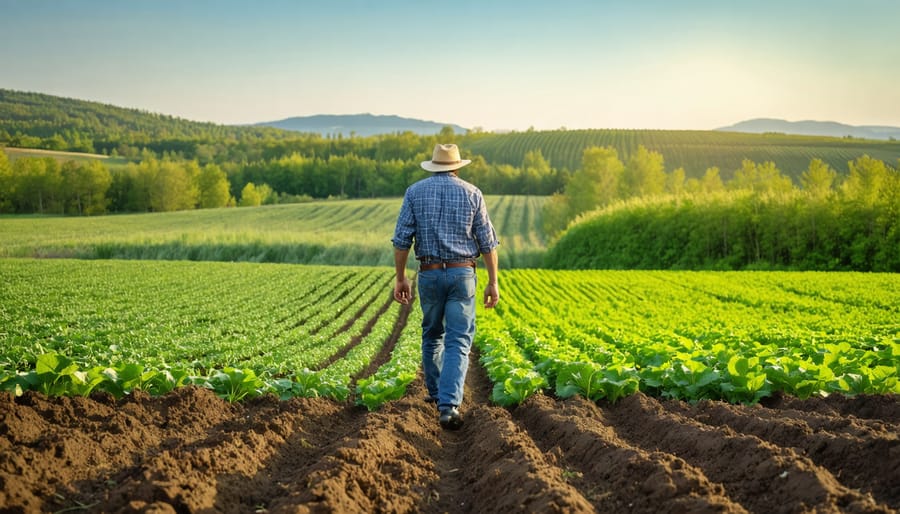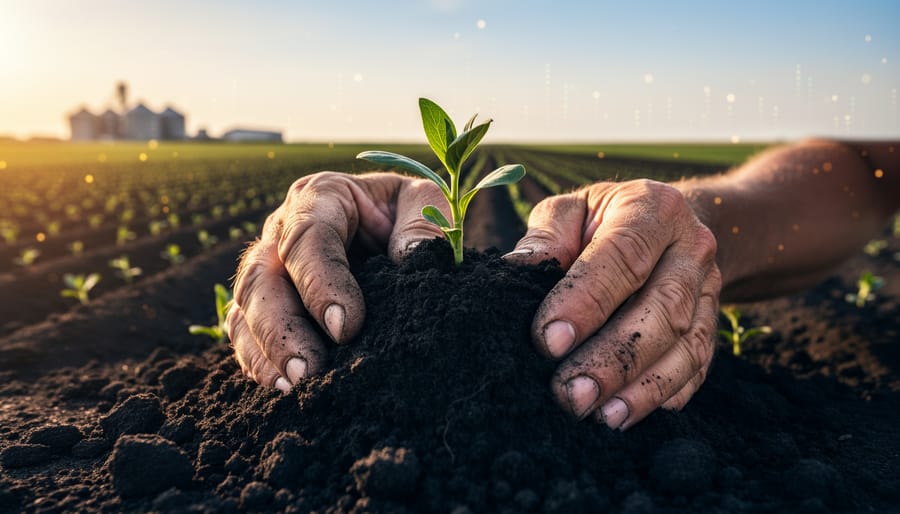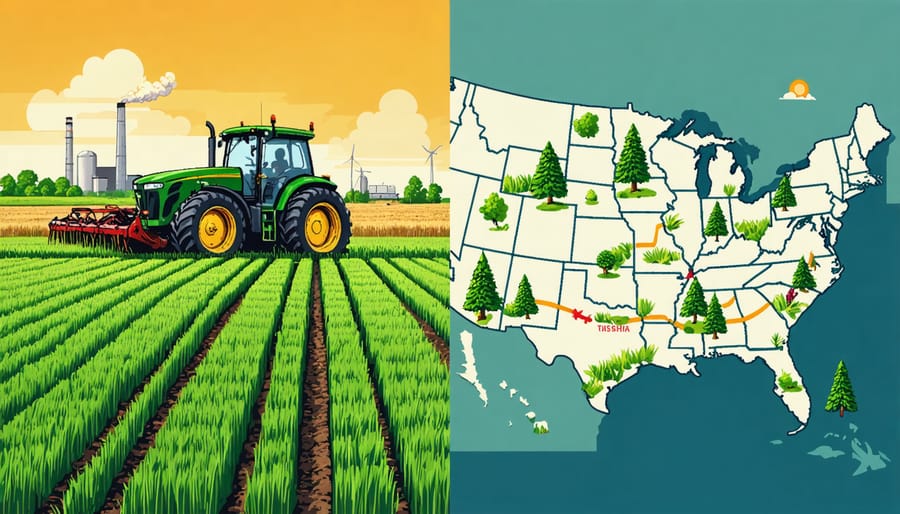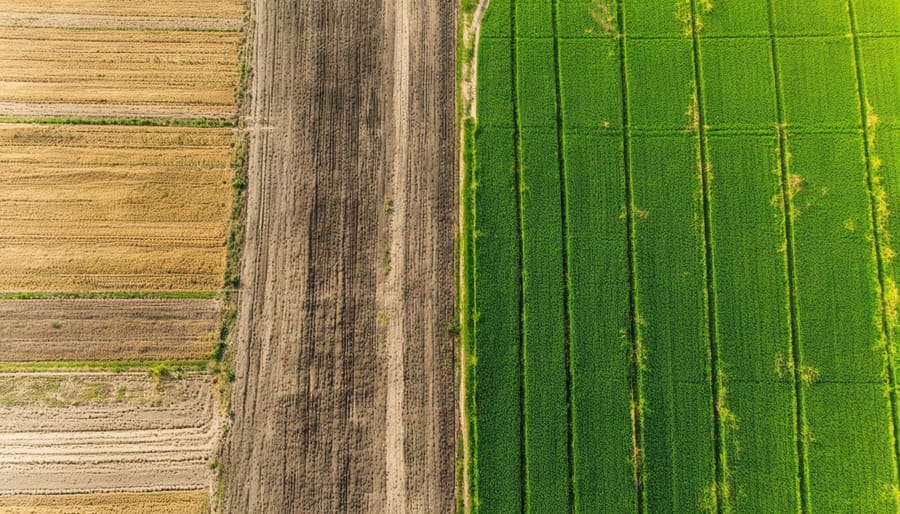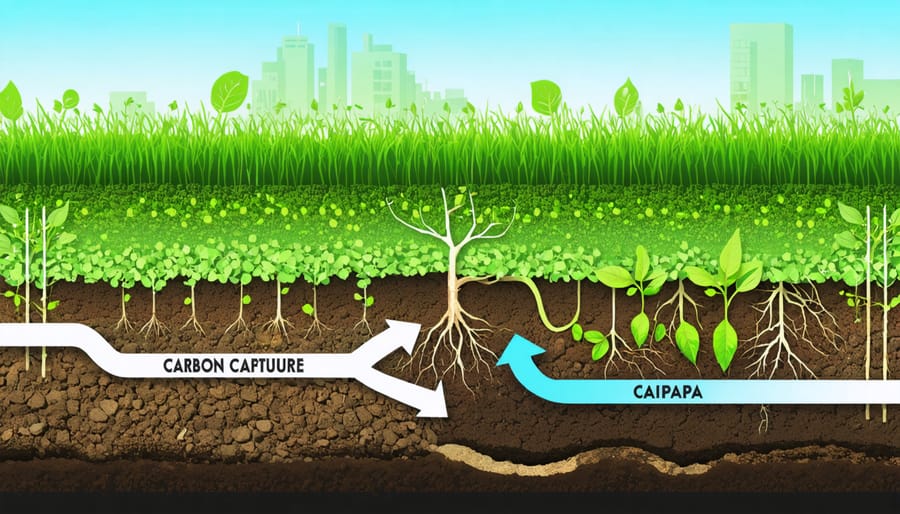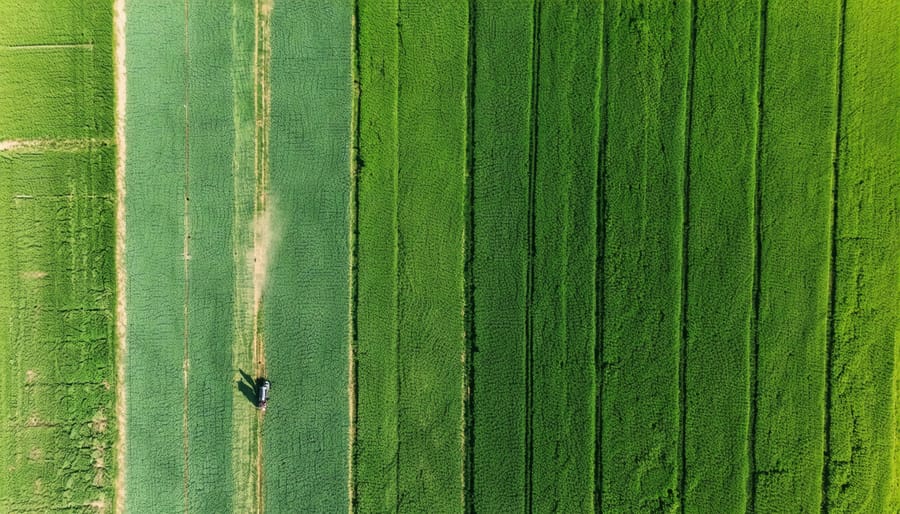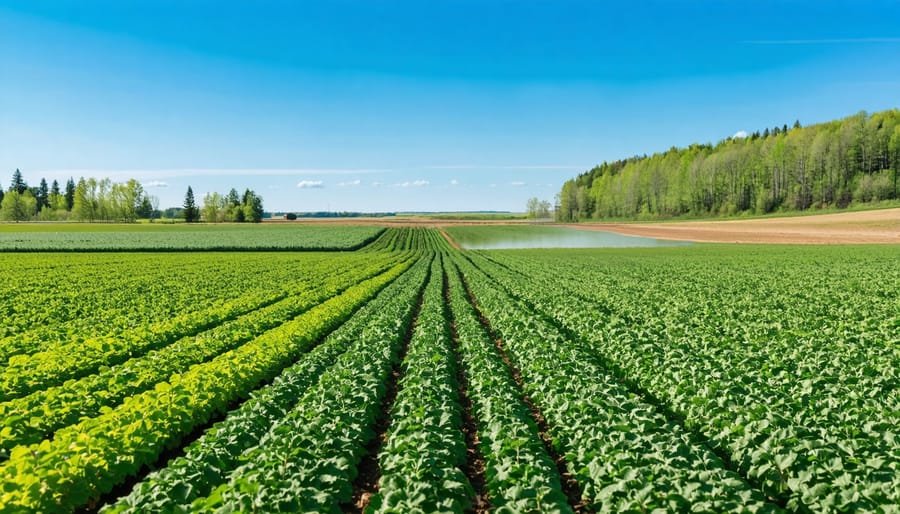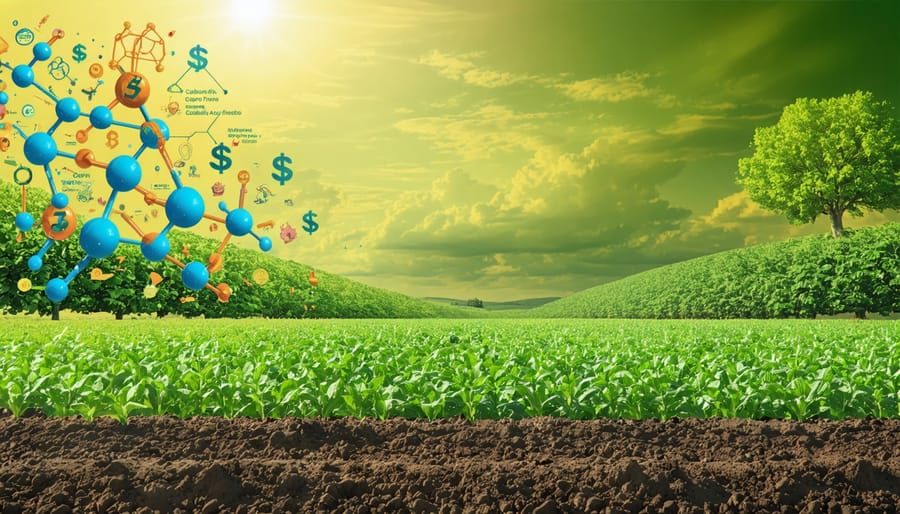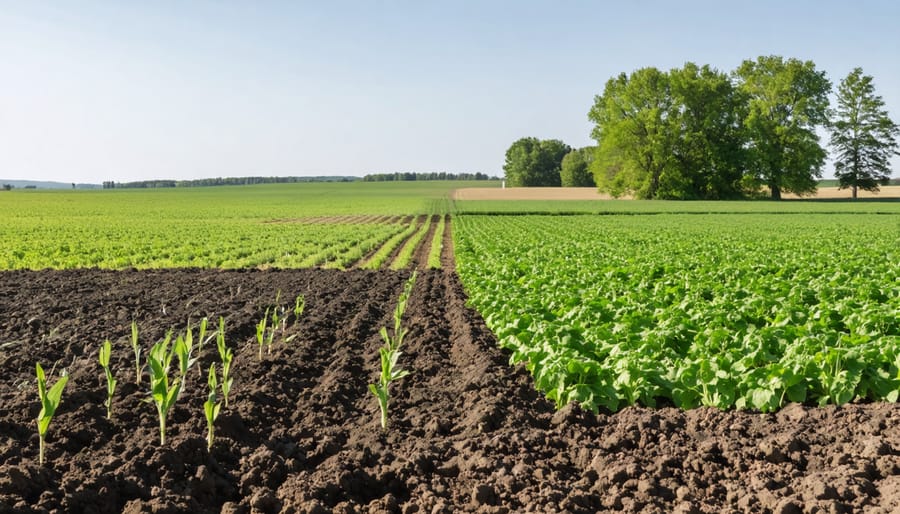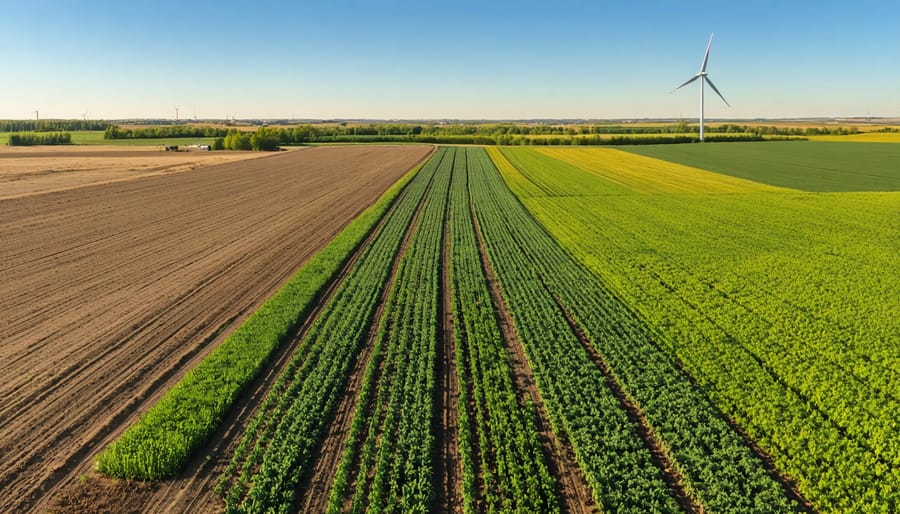Beneath our feet lies one of agriculture’s most powerful climate solutions: soil carbon cycling transforms ordinary farmland into a vital carbon sink while boosting crop yields and soil health. As Canadian farmers face increasing pressure to adopt sustainable practices, understanding this natural process has become essential for both environmental stewardship and economic opportunity. Through microscopic interactions between plant roots, soil microbes, and organic matter, carbon moves continuously between soil and atmosphere in a delicate dance that can either release or capture greenhouse gases. This cycling process, when properly managed through practices like no-till farming and cover cropping, enables Alberta’s agricultural lands to sequester significant amounts of atmospheric carbon while building more resilient farming operations. For farmers considering entry into emerging carbon markets, grasping these fundamental soil processes isn’t just about environmental benefits—it’s about positioning their operations at the forefront of a growing economic opportunity in agricultural carbon credits that could reshape the future of farming in Western Canada.
The Science Behind Soil Carbon Storage
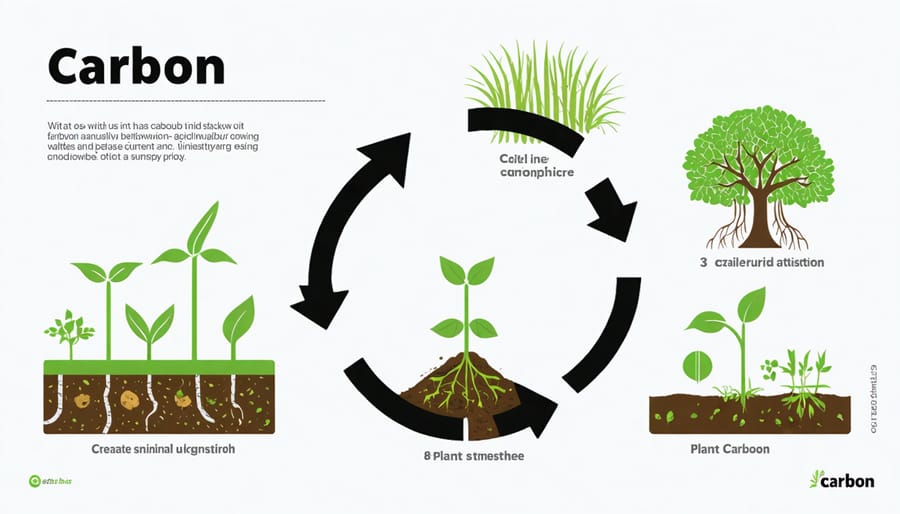
Understanding Carbon Cycling in Alberta Soils
Alberta’s diverse soil landscape, ranging from rich Black Chernozemic soils in the parkland regions to Brown Chernozemic soils in the prairies, offers significant potential for carbon storage. These soil types, particularly the Black Chernozems, can store up to 100 tonnes of carbon per hectare in their top 30 centimetres, making them valuable assets in climate-smart farming.
Local research shows that implementing regenerative agriculture benefits can increase soil organic carbon by 0.2 to 0.5 tonnes per hectare annually. Farmers across central Alberta have reported success with practices like reduced tillage and cover cropping, which help maintain soil structure and enhance carbon sequestration.
The province’s cool climate and lengthy winter season actually work in our favour, slowing organic matter decomposition and allowing for greater carbon accumulation. Clay-rich soils common in the Peace River region and central Alberta are particularly effective at binding and protecting organic carbon from decomposition.
Understanding your specific soil type and its carbon storage potential is crucial for developing effective management strategies. Local soil testing services can provide detailed analysis of your soil’s organic carbon content and texture composition, helping you make informed decisions about carbon management practices.
Measuring Your Soil’s Carbon Content
Understanding your soil’s carbon content is a crucial aspect of soil health importance and management. Here in Alberta, farmers have several practical methods to measure soil carbon levels. The most accessible approach is the annual soil sampling program, which many local agronomists and soil testing labs offer.
To get started, collect soil samples from different areas of your field using a soil probe, focusing on depths of 0-15 cm and 15-30 cm. Take samples from at least 10-15 locations per field to ensure representative results. Remember to keep samples from different depths separate and properly labeled.
Local agricultural extension offices can recommend certified labs that provide comprehensive soil analysis, including organic carbon content. Many Alberta labs now offer specialized carbon testing packages designed specifically for carbon credit programs.
For ongoing monitoring, consider investing in a soil organic matter meter, which provides quick field assessments. While not as precise as lab testing, these tools help track changes over time. Some farmer groups in Alberta have also started community equipment-sharing programs for these devices, making them more accessible to everyone.
Keep detailed records of your measurements, including GPS coordinates of sampling locations, to track changes accurately over multiple growing seasons.
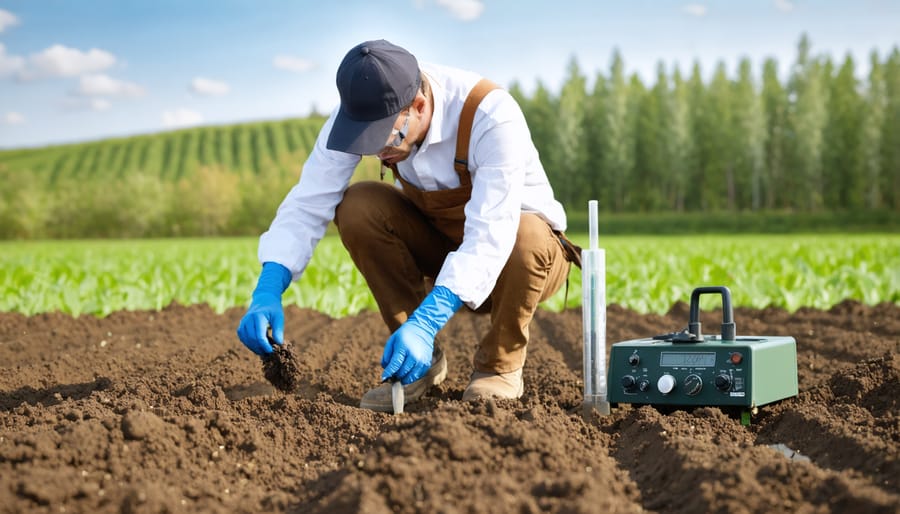
Current Market Opportunities in Alberta
Provincial Carbon Credit Programs
Alberta leads Canada in carbon offset opportunities for farmers, offering a well-established program through the Alberta Emission Offset System. Under this program, farmers can earn carbon credits for implementing practices that enhance soil carbon storage, such as reduced tillage, cover cropping, and improved crop rotations.
To participate, farmers must first establish a baseline of their current practices and soil carbon levels. The program requires a minimum of three years of consistent carbon-sequestering practices before credits can be verified. Documentation is essential – farmers need to maintain detailed records of their field operations, inputs, and management practices.
Currently, Alberta farmers can earn approximately $30 per tonne of CO2 equivalent sequestered, with rates adjusting based on market conditions. Local success stories include the Brown family farm near Lethbridge, which earned over $15,000 in credits during their first verification period by converting to no-till practices across 800 hectares.
The verification process involves working with approved third-party verifiers who assess your documentation and field practices. Many agricultural organizations and carbon aggregators in Alberta can help farmers navigate the application process, handle paperwork, and connect with buyers. The Alberta Conservation Association and various agricultural fieldmen offer free consultations to help farmers determine their eligibility and potential returns.
Private Market Opportunities
The carbon credit market in Alberta presents exciting opportunities for farmers looking to monetize their soil carbon management practices. Several established brokers and aggregators are actively working with Canadian farmers, including Carbon Credit Solutions, Radicle, and AgriTrade Services. These organizations help bridge the gap between farmers and corporate buyers seeking to offset their emissions.
Major corporations across various sectors, from energy to tech giants, are increasingly interested in purchasing agricultural carbon credits. Companies like Shell Canada, TransAlta, and Microsoft have shown particular interest in Alberta’s agricultural carbon offsets, offering competitive prices ranging from $15 to $30 per tonne of sequestered carbon.
To participate in these markets, farmers typically need to work with an approved aggregator who handles verification, documentation, and credit trading. The process usually involves a baseline assessment of your soil carbon levels, followed by regular monitoring and verification of improvements. Most aggregators operate on a commission basis, taking a percentage of the credits’ value in exchange for their services.
Local agricultural cooperatives are also emerging as important players, pooling resources and sharing knowledge to help smaller operations access these markets more effectively. Some innovative arrangements include pre-purchase agreements where buyers commit to purchasing credits before they’re generated, providing farmers with upfront capital for implementing carbon-friendly practices.
Practical Steps to Enter the Carbon Market
Documentation and Verification Requirements
To participate in Alberta’s carbon credit programs, proper documentation is essential for verifying your soil carbon management practices. Start by establishing baseline measurements of your soil carbon levels through accredited soil testing services. Keep detailed records of all farming activities, including dates of implementation, specific practices used, and any relevant photographs or GPS data.
Required documentation typically includes:
– Annual soil testing results
– Field management logs
– Crop rotation records
– Equipment maintenance records
– Input application records
– Yield data
– Maps of managed areas
Many Alberta farmers find success using digital record-keeping tools and mobile apps designed specifically for carbon credit documentation. These platforms help streamline the process and ensure all necessary information is captured consistently.
Verification requires third-party assessment by approved verifiers who will review your documentation and conduct on-site visits. They’ll evaluate your practices against program protocols and confirm the accuracy of your carbon sequestration claims. Working with local agricultural extension services can help you prepare for these assessments.
Consider joining farmer networks or study groups in your area to share experiences and best practices for documentation. Many successful participants recommend creating a simple daily logging system to make record-keeping manageable. Remember to maintain all records for at least seven years, as required by most carbon credit programs in Alberta.
Keep digital backups of all documentation and consider using cloud storage for added security. Regular reviews of your documentation system help identify areas for improvement and ensure you’re meeting all program requirements.
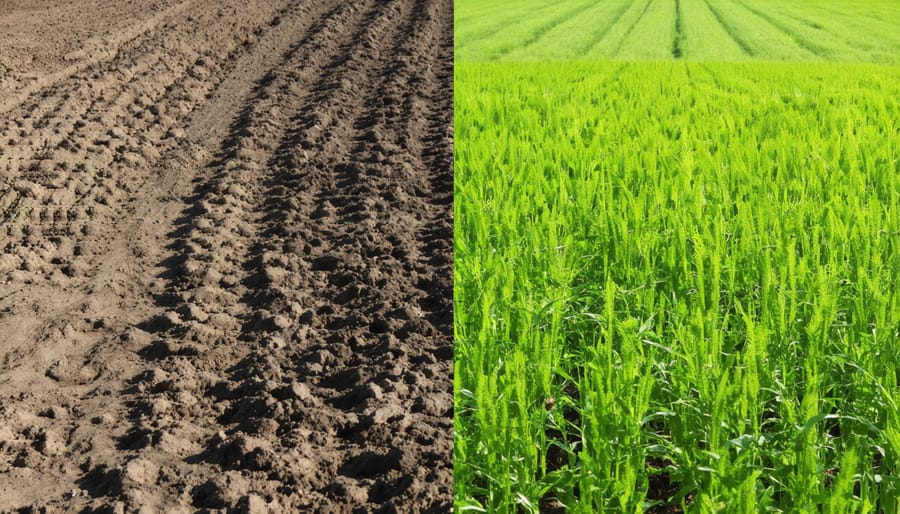
Best Management Practices
Implementing effective soil management practices is crucial for maximizing carbon sequestration in Alberta’s agricultural lands. No-till farming practices have proven particularly successful, reducing soil disturbance and maintaining crop residue coverage. Many Prairie farmers have seen significant results by combining these methods with diverse crop rotations, including deep-rooted perennials and cover crops.
Adding organic amendments, such as composted manure or crop residues, is another reliable strategy for improving soil carbon content. Local success stories show that applying 10-15 tonnes per hectare of quality compost annually can boost organic matter levels by 0.5-1% over five years.
Proper grazing management on pastures and rangelands offers another effective approach. Rotational grazing, with adequate rest periods between cycles, helps maintain plant health and encourages deeper root development. Many Alberta ranchers have successfully implemented adaptive multi-paddock grazing systems, reporting improved soil structure and increased organic matter.
Managing soil moisture through efficient irrigation and drainage systems also plays a vital role. Installing moisture sensors and maintaining proper soil coverage helps optimize water use while supporting microbial activity essential for carbon cycling. Consider working with local agricultural extension services to develop a customized management plan that suits your specific soil conditions and farming operations.
Real Success Stories
Meet John and Sarah Peterson, third-generation farmers from Lacombe County, who transformed their 2,000-hectare farm into a carbon success story. By implementing no-till practices and diverse crop rotations over the past five years, they’ve earned more than $45,000 through Alberta’s carbon offset program.
“We were skeptical at first,” John admits, “but the soil health improvements we’ve seen, combined with the additional income, have made this a winning strategy for our operation.”
In Southern Alberta, the Miller Family Farm has taken a different approach. Tom Miller incorporated cover crops and precision farming techniques, leading to a verified carbon sequestration rate of 0.8 tonnes per hectare annually. Their participation in the carbon market has not only generated supplemental income but has also reduced their fertilizer costs by 20%.
Perhaps the most inspiring story comes from Red Deer County, where a collective of five farms joined forces to participate in carbon markets. Led by veteran farmer Robert Thompson, the group pooled their resources for soil testing and verification processes, making the program more accessible for smaller operations. Their collaborative approach has resulted in combined earnings of $75,000 in carbon credits over three years while improving soil productivity across all participating farms.
These success stories demonstrate that with proper planning and implementation, Alberta farmers can benefit both environmentally and financially from carbon market participation.
Future Market Projections
The carbon credit market in Alberta continues to show promising growth, with projections indicating a significant increase in value over the next decade. Current estimates suggest that agricultural carbon credits could reach $30-45 per tonne by 2030, presenting substantial opportunities for farmers implementing sustainable soil management practices.
Industry experts from the Alberta Carbon Registry report that demand for agricultural carbon credits is expected to triple by 2025, driven by increased corporate commitments to sustainability and stricter environmental regulations. This growth is particularly relevant for farmers in regions like Peace Country and Central Alberta, where soil conditions are ideal for carbon sequestration projects.
Market analysts predict that early adopters of soil carbon management practices will be best positioned to capitalize on these opportunities. Farmers who establish baseline measurements and implement verified carbon sequestration practices now could potentially generate additional revenue of $15-25 per hectare annually through carbon credits by 2025.
The emergence of new technologies for measuring and monitoring soil carbon levels is expected to streamline the verification process, making it more accessible and cost-effective for farmers to participate in carbon markets. Several Alberta-based agtech companies are developing user-friendly tools for soil carbon measurement, which should be widely available within the next two years.
Looking ahead, partnerships between agricultural cooperatives and carbon credit buyers are likely to become more common, creating more stable and predictable revenue streams for farmers. These arrangements could help reduce market entry barriers and provide guaranteed prices for carbon credits, making long-term planning more feasible for farm operations considering soil carbon initiatives.
As we’ve explored throughout this article, soil carbon cycling plays a vital role in both agricultural productivity and climate change mitigation. For Alberta farmers, understanding and managing soil carbon presents a unique opportunity to enhance farm operations while contributing to environmental sustainability.
The key takeaway is that healthy soil management practices – such as reduced tillage, cover cropping, and proper crop rotation – not only improve soil health but also increase carbon sequestration potential. These practices create a win-win situation, boosting yield potential while opening doors to carbon credit opportunities in Alberta’s growing carbon market.
Moving forward, we encourage farmers to take these practical next steps:
1. Conduct baseline soil testing to understand your current carbon levels
2. Document your current farming practices and identify areas for improvement
3. Connect with local agricultural extension services for guidance
4. Consider joining a carbon credit program through verified aggregators
5. Network with other farmers who are successfully implementing carbon management practices
Remember, you’re not alone in this journey. Alberta’s agricultural community is leading the way in sustainable farming practices, and resources are available to support your transition. Start small, focus on consistent implementation, and monitor your progress over time.
By embracing soil carbon management, you’re not just investing in your farm’s future – you’re contributing to Canada’s climate solutions while potentially creating new revenue streams for your operation.

